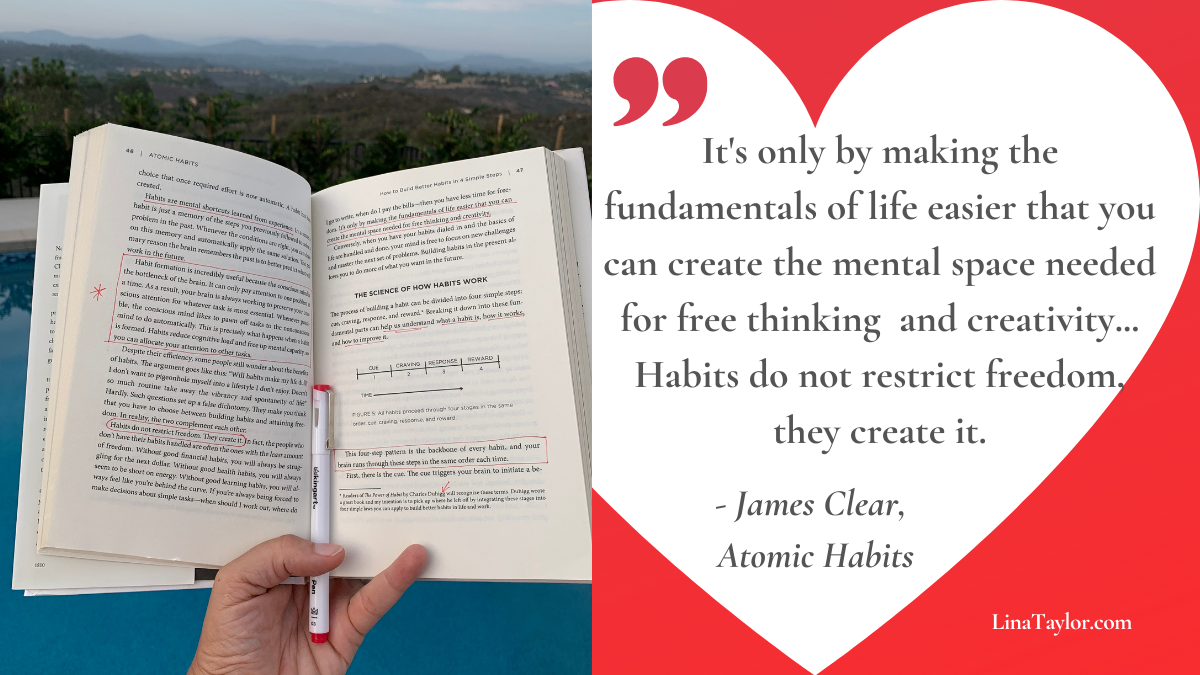The Power of Habits
With the beginning of the school year, there is an opportunity to create new ways of doing things and change some old habits that don’t serve us very well. In Atomic Habits, the author James Clear masterfully builds on the science of habits championed by Charles Duhigg in his work The Power of Habit. Here are a few quick takeaways to helps us kick off the new school year more in the direction that we want it to go: with our kids and families, in our business, and for our health and wellbeing.
From playing elite sports we know the practical application of what neuroscience is discovering about our brains: when we make a behavior automatic, it takes way less energy to perform, leaving the excess energy for finding higher level opportunities. One could argue that this is the foundation of success.
To help us better understand the true value of habits, how they are formed, and how to change a bad habit into a good one, let’s define what a habit is:
“A habit is a behavior that has been repeated enough times to become automatic. The process of habit formation begins with trial and error.”
This process of trial and error is extremely energy-consumptive for the brain (and costly for us, as we can all attest to, I’m sure). Eventually, after doing enough of the “try-fail-learn-try differently” loop, we stumble upon a reward. In sports, the reward is very clearly measured and recorded with a point going in your favor. You ask yourself, wait a minute, what did I do just before that? You repeat the behavior and you get the same reward. You do it again. And thus a habit is formed. As you solve the problem repeatedly in the same way, the brain begins to automate the process:
As habits are created, the activity level of the brain decreases, using much less energy, meaning that HABITS ARE EFFICIENT.
You learn to lock in on the cues that predict success and tune out everything else. James Clear explains that habit formation is incredibly useful because the conscious mind is the “bottleneck” of the brain: it can only pay attention to one problem at a time. As a result, your brain is always working to preserve your conscious attention for whatever task is most essential.
So, if you wanted to write, be creative, or run a global company, you will have much more capacity to do that if you’ve automated or habitualized the repeating tasks in life like paying your bills on time and taking care of your health to “create the mental space needed for free thinking and creativity.”
How do we change bad habits into good ones?
To know how to change a habit, I believe it is crucial to understand how habits work. Here are the basics. The process of building a habit involves the following four steps:
Cue - this triggers the brain to initiate a behavior, a little nugget that predicts a reward.
Craving - the motivational force behind every habit, there’s something you want.
Response - the actual habit / behavior, the thing you do to hopefully get what you want.
Reward - the end goal of every habit.
The cue is about noticing the reward. The craving is about wanting the reward. The response is about obtaining the reward. We chase rewards because they serve two purposes: they satisfy us and they teach us.
Here’s the part that holds the key to change:
If a behavior is insufficient in any of the four stages, it will not become or it will cease to be a habit.
What does this mean? This means that if we want to make a change in our habits, we have to focus on changing what the behavior means to us first, before attempting to force ourselves to change it. The reason why diets don’t work, for example, is because you will never attain lasting change if you only try to will-power yourself to do something different, without having first worked on altering your mindset around what the behavior means, how is it bringing you what you want.
It is so incredibly important to understand this first and when you do, you will have removed the biggest barrier that’s holding you back and where most people get stuck!
Here are the three key questions to ask yourself in that micro-moment when you’re about to make the decision on what to do:
What do I want?
What do I really want?
What is the best way to get it?
To answer the second question honestly, requires a degree of humility, awareness, and acceptance. These are the building blocks of resilience, which I write about in my previous post - see “Building Resilience: Step 1”.
James Clear outlines four laws of behavior change, which are directly connected to the cue, craving, response, and reward. When you want to create a good habit, you use the positive (listed first) and when you want to break a bad habit, you use the inversion of the law (listed second):
Make it Obvious; to break a habit - make it invisible.
Make it Attractive; to break a habit - make it unattractive.
Make it Easy; to break a habit - make it difficult.
Make it Satisfying; to break a habit - make it unsatisfying.
Ultimately, the idea is to make it satisfying to do the right thing - the same is true for our health, for our careers and business, for our children and families.

